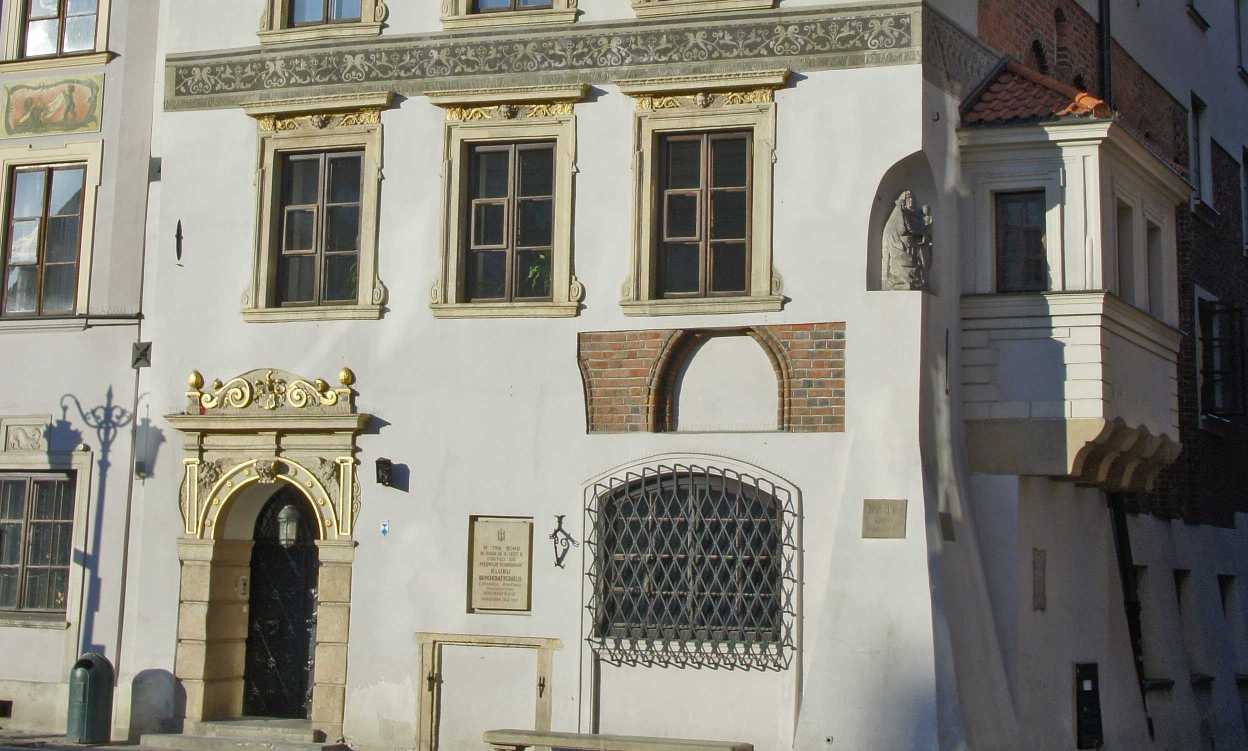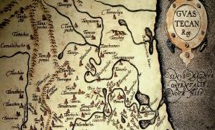CRM Entity
Canonical URL http://www.cidoc-crm.org/cidoc-crm/E1_CRM_Entity
Byt CRM
CRM Entity
CRM Entität
CRM Сущность
CRM实体
Entidade CRM
Entité CRM
Οντότητα CIDOC CRM
This class comprises all things in the universe of discourse of the CIDOC Conceptual Reference Model. It is an abstract concept providing for three general properties: 1. Identification by name or appellation, and in particular by a preferred identifier 2. Classification by type, allowing further refinement of the specific subclass an instance belongs to 3. Attachment of free text for the expression of anything not captured by formal properties With the exception of E59 Primitive Value, all other classes within the CRM are directly or indirectly specialisations of E1 CRM Entity.
| Property | Expected type | Definition |
|---|---|---|
| P3_has_note |
Literal
|
This property is a container for all informal descriptions about an object that have not been expressed in terms of CRM constructs. In particular it captures the characterisation of the item itself, its internal structures, appearance etc. Like property P2 has type (is type of), this property is a consequence of the restricted focus of the CRM. The aim is not to capture, in a structured form, everything that can be said about an item; indeed, the CRM formalism is not regarded as sufficient to express everything that can be said. Good practice requires use of distinct note fields for different aspects of a characterisation. The P3.1 has type property of P3 has note allows differentiation of specific notes, e.g. “construction”, “decoration” etc. An item may have many notes, but a note is attached to a specific item. |
| P129i_is_subject_of |
E89_Propositional_Object
|
|
| P136i_supported_type_creation |
E83_Type_Creation
|
|
| P137_exemplifies |
E55_Type
|
This property allows an item to be declared as a particular example of an E55 Type or taxon The P137.1 in the taxonomic role property of P137 exemplifies (is exemplified by) allows differentiation of taxonomic roles. The taxonomic role renders the specific relationship of this example to the Type, such as "prototypical", "archetypical", "lectotype", etc. The taxonomic role "lectotype" is not associated with the Type Creation (E83) itself, but selected in a later phase. |
| P138i_has_representation |
E36_Visual_Item
|
|
| P140i_was_attributed_by |
E13_Attribute_Assignment
|
|
| P141i_was_assigned_by |
E13_Attribute_Assignment
|
|
| P15i_influenced |
E7_Activity
|
|
| P17i_motivated |
E7_Activity
|
|
| P1_is_identified_by |
E41_Appellation
|
This property describes the naming or identification of any real world item by a name or any other identifier. This property is intended for identifiers in general use, which form part of the world the model intends to describe, and not merely for internal database identifiers which are specific to a technical system, unless these latter also have a more general use outside the technical context. This property includes in particular identification by mathematical expressions such as coordinate systems used for the identification of instances of E53 Place. The property does not reveal anything about when, where and by whom this identifier was used. A more detailed representation can be made using the fully developed (i.e. indirect) path through E15 Identifier Assignment. |
| P2_has_type |
E55_Type
|
This property allows sub typing of CRM entities - a form of specialisation – through the use of a terminological hierarchy, or thesaurus. The CRM is intended to focus on the high-level entities and relationships needed to describe data structures. Consequently, it does not specialise entities any further than is required for this immediate purpose. However, entities in the isA hierarchy of the CRM may by specialised into any number of sub entities, which can be defined in the E55 Type hierarchy. E51 Contact Point, for example, may be specialised into “e-mail address”, “telephone number”, “post office box”, “URL” etc. none of which figures explicitly in the CRM hierarchy. Sub typing obviously requires consistency between the meaning of the terms assigned and the more general intent of the CRM entity in question. |
| P39i_was_measured_by |
E16_Measurement
|
|
| P41i_was_classified_by |
E17_Type_Assignment
|
|
| P48_has_preferred_identifier |
E42_Identifier
|
This property records the preferred E42 Identifier that was used to identify an instance of E1 CRM Entity at the time this property was recorded. More than one preferred identifier may have been assigned to an item over time. Use of this property requires an external mechanism for assigning temporal validity to the respective CRM instance. P48 has preferred identifier (is preferred identifier of), is a shortcut for the path from E1 CRM Entity through P140 assigned attribute to (was attributed by), E15 Identifier Assignment, P37 assigned (was assigned by) to E42 Identifier. The fact that an identifier is a preferred one for an organisation can be better expressed in a context independent form by assigning a suitable E55 Type to the respective instance of E15 Identifier Assignment using the P2 has type property. |
| P62i_is_depicted_by |
E24_Physical_Man-Made_Thing
|
|
| P67i_is_referred_to_by |
E89_Propositional_Object
|
|
| P70i_is_documented_in |
E31_Document
|
|
| P71i_is_listed_in |
E32_Authority_Document
|
|
| Property | On types | Definition |
| P129_is_about |
E89_Propositional_Object
|
This property documents that an E89 Propositional Object has as subject an instance of E1 CRM Entity.
|
| P136_was_based_on |
E83_Type_Creation
|
This property identifies one or more items that were used as evidence to declare a new E55 Type.
The examination of these items is often the only objective way to understand the precise characteristics of a new Type. Such items should be deposited in a museum or similar institution for that reason. The taxonomic role renders the specific relationship of each item to the Type, such as "holotype" or "original element".
|
| P137i_is_exemplified_by |
E55_Type
|
|
| P138_represents |
E36_Visual_Item
|
This property establishes the relationship between an E36 Visual Item and the entity that it visually represents.
Any entity may be represented visually. This property is part of the fully developed path from E24 Physical Man-Made Thing through P65 shows visual item (is shown by), E36 Visual Item, P138 represents (has representation) to E1 CRM Entity, which is shortcut by P62depicts (is depicted by). P138.1 mode of representation allows the nature of the representation to be refined.
This property is also used for the relationship between an original and a digitisation of the original by the use of techniques such as digital photography, flatbed or infrared scanning. Digitisation is here seen as a process with a mechanical, causal component rendering the spatial distribution of structural and optical properties of the original and does not necessarily include any visual similarity identifiable by human observation.
|
| P140_assigned_attribute_to |
E13_Attribute_Assignment
|
This property indicates the item to which an attribute or relation is assigned.
|
| P141_assigned |
E13_Attribute_Assignment
|
This property indicates the attribute that was assigned or the item that was related to the item denoted by a property P140 assigned attribute to in an Attribute assignment action.
|
| P15_was_influenced_by |
E7_Activity
|
This is a high level property, which captures the relationship between an E7 Activity and anything that may have had some bearing upon it.
The property has more specific sub properties.
|
| P17_was_motivated_by |
E7_Activity
|
This property describes an item or items that are regarded as a reason for carrying out the E7 Activity.
For example, the discovery of a large hoard of treasure may call for a celebration, an order from head quarters can start a military manoeuvre.
|
| P1i_identifies |
E41_Appellation
|
|
| P2i_is_type_of |
E55_Type
|
|
| P39_measured |
E16_Measurement
|
This property associates an instance of E16 Measurement with the instance of E1 CRM Entity to which it applied. An instance of E1 CRM Entity may be measured more than once. Material and immaterial things and processes may be measured, e.g. the number of words in a text, or the duration of an event.
|
| P41_classified |
E17_Type_Assignment
|
This property records the item to which a type was assigned in an E17 Type Assignment activity.
Any instance of a CRM entity may be assigned a type through type assignment. Type assignment events allow a more detailed path from E1 CRM Entity through P41 classified (was classified), E17 Type Assignment, P42 assigned (was assigned by) to E55 Type for assigning types to objects compared to the shortcut offered by P2 has type (is type of).
|
| P48i_is_preferred_identifier_of |
E42_Identifier
|
|
| P62_depicts |
E24_Physical_Man-Made_Thing
|
This property identifies something that is depicted by an instance of E24 Physical Man-Made Thing. Depicting is meant in the sense that the surface of the E24 Physical Man-Made Thing shows, through its passive optical qualities or form, a representation of the entity depicted. It does not pertain to inscriptions or any other information encoding.
This property is a shortcut of the more fully developed path from E24 Physical Man-Made Thing through P65 shows visual item (is shown by), E36 Visual Item, P138 represents (has representation) to E1 CRM Entity. P62.1 mode of depiction allows the nature of the depiction to be refined.
|
| P67_refers_to |
E89_Propositional_Object
|
This property documents that an E89 Propositional Object makes a statement about an instance of E1 CRM Entity. P67 refers to (is referred to by) has the P67.1 has type link to an instance of E55 Type. This is intended to allow a more detailed description of the type of reference. This differs from P129 is about (is subject of), which describes the primary subject or subjects of the E89 Propositional Object.
|
| P70_documents |
E31_Document
|
This property describes the CRM Entities documented by instances of E31 Document.
Documents may describe any conceivable entity, hence the link to the highest-level entity in the CRM hierarchy. This property is intended for cases where a reference is regarded as being of a documentary character, in the scholarly or scientific sense.
|
| P71_lists |
E32_Authority_Document
|
This property documents a source E32 Authority Document for an instance of an E1 CRM Entity.
|
| predicate | object |
|---|---|
| comment |
"This class comprises all things in the universe of discourse of the CIDOC Conceptual Reference Model.
It is an abstract concept providing for three general properties:
1. Identification by name or appellation, and in particular by a preferred identifier
2. Classification by type, allowing further refinement of the specific subclass an instance belongs to
3. Attachment of free text for the expression of anything not captured by formal properties
With the exception of E59 Primitive Value, all other classes within the CRM are directly or indirectly specialisations of E1 CRM Entity.
"@en
|
| label |
"Byt CRM"@pl
"CRM Entity"@en "CRM Entität"@de "CRM Сущность"@ru "CRM实体"@zh "Entidade CRM"@pt "Entité CRM"@fr "Οντότητα CIDOC CRM"@el |
| type |
owl:Class
|

